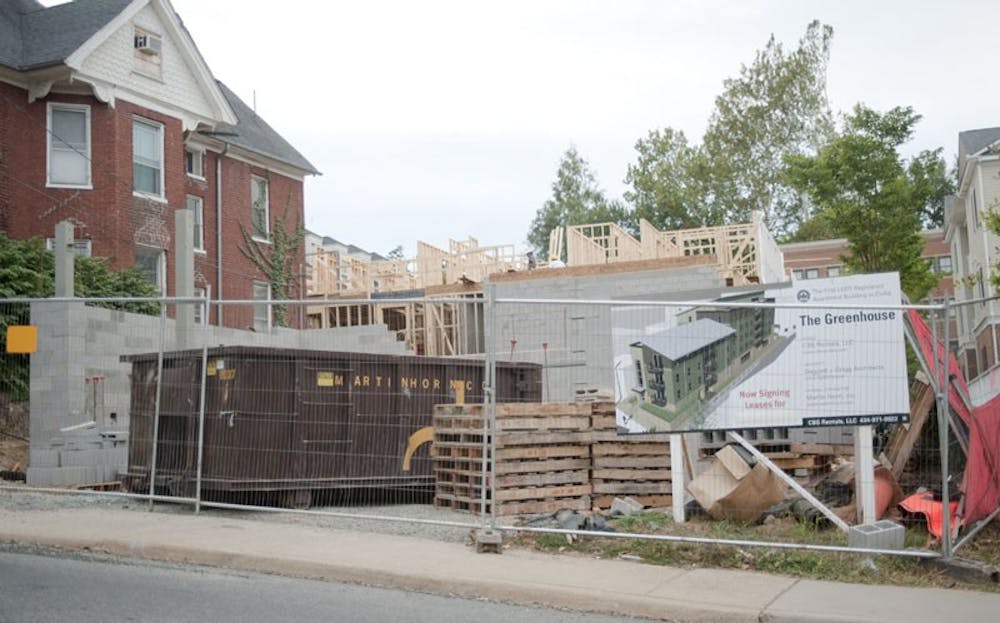A housing complex being constructed on 14th and 15th Streets will provide University students with a new way to reduce their carbon footprints while residing in Charlottesville.
Construction on "The Greenhouse," the first apartment building in Charlottesville accredited by the standards of Leadership in Energy & Environmental Design, is set to finish by June 2011. LEED certification is an internationally recognized system for evaluating buildings based on factors such as interior air quality, carbon dioxide emission reduction and the use of sustainable energy in construction. The structure itself, meanwhile, is the result of the collaboration between CBS Rentals, Daggett + Grigg Architects and the contracting services of Martin Horn, Inc.
Work on the complex began this June, and builders have used sustainable resources throughout the process to reach the LEED accreditation, which requires more planning than the construction of a traditional residential building, said John DeLacey, assistant project manager at Martin Horn, Inc.
To facilitate ecocentric living, the Greenhouse will be furnished with EnergyStar appliances and will feature solar panels, water-saving plumbing structures and energy-efficient windows and lighting.
Green features, however, are not limited to the interior of the building. The roof is made of white rubber, which King said reflects sunlight and reduces cooling costs. The parking lot will feature electric charging stations in anticipation of electric automobiles. In addition, the pavement is permeable, which allows rainwater to seep back into the ground. Residents of The Greenhouse will be able to choose between four-bedroom layouts with either two or three bathrooms. There also will be one-bedroom, one-bathroom options on the 14th Street side of the building.
The estimated rent is about $700-760 per each occupant in a four-bedroom apartment for each month.
First-year Engineering student Mike Recachinas said that despite the environmental advantages, the rent might make the Greenhouse an impractical option for many students who would find it too steep.
The designers, however, believe the moderately high price is a deceptive figure. Because of the efficiency of the appliances and windows, Alan King of CBS Rentals said he estimates a 20- to 30-percent savings on monthly utilities.
Despite the initial cost of building a LEED - which King said is about 20 percent higher than for a non-certified building - the sustainable and eco-friendly materials make it so that "the investment pays itself back," DeLacey said.
The building's creators hope the construction and success of The Greenhouse will motivate developers to look into sustainable alternatives instead of feeling intimidated by the higher financial cost.
DeLacey said interest in more-sustainable living is growing nationwide, despite a setback during the recession.
"People are realizing that the cost may be a little higher now, but it is an important investment for future generations," he said.
The Greenhouse allows its tenants to give back to the community, King said. In addition to the recycling program, King said, CBS Rentals plans to sell the solar energy accumulated from the panels back to Dominion Power. The proceeds will be donated to Madison House in the name of the current residents.
-Josh McNamara contributed to this article







